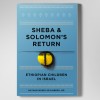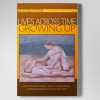From afar, it might have sounded like “Thunk, thunk, thunk, thunk”; at the base of my skull, it was more like “K’thunk, K’Thunk, K’thunk, K’Thunk.” What I didn’t know was what how it sounded to a rattlesnake in the dusk of the Dakota scrubland. My second day’s doctoring done on Eagle Butte, the heat dissipating quickly at sunset, I hit the asphalt’s edge to jog.
In Chicago, I had snagged a pair of Nikes, the early waffle-sole design, discovered by Bill Bowerman when he poured urethane onto his wife’s waffle iron. Then, Bowerman and Knight’s company was still called Blue Ribbon Sports; word was that their victory shoe would protect knees and add speed. I came up in an era when leather was treasured for feet; once yearly, before Pesach, we visited the leather shoe store, where we played with this tall contraption, like a scale, into which you could insert your feet and see your skeleton; a time more innocent, before parents knew to protect their children from Xray exposure. Good money, hard-saved dough, was spent on a pair of Oxfords. High-tops of flimsy cloth and thin sole were for basketball and any other weekend activity. It was an era before I knew the difference between an Oxford and a Brogue, between open- and closed-lacing, nor would have cared; a time when I most admired my pediatrician’s penny-loafers, shining coppers adorned. Loafers I desired, but parents believed that laces protected growing feet. Now, over two decades on, I had laid out precious bucks on some rapidly evolved descedant of polyester to protect my feet and knees.
In the afternoon Dakota summer, minimally dressed — white T, running shorts (the days before wick-a-ways) and my Nikes — I ran with traffic, not yet knowing the treacherous combination of Sioux and cowboy drivers in pick-ups (often booze-fueled before Ethanol engines). But, it was the K’Thunking in my head, the tatooing of my feet in the desert eve that should have hinted to me why the Indians came out to look, some pointing, some waving — not quite a greeting, not a hello, a different sort of wave; a mother stepped onto her veranda holding her child, pointing; words were shouted, muddled in the evening breezes so I understood them not; I thought it was a welcome to the new doc.
As I returned, Nurse Alpern greeted me in the lot between hospital and my apartment building. “Rattlers are out.” Like this M.D., Crotalus Horridus also leave their rocks in the eve, but looking for meals. Rattlers also hear K’Thunking or Thunking, or some rattled version of this to find their meal: they too are served, who simply listen and wait. Mrs. Alpern, the ever practical: “Don’t do this again; can’t afford to lose docs.” The Indians who came out to see the doc in shorts and Tee? They thought I was dumb; wondered how far I would get.
It was a few weeks later that I saw my first snake bite. It’s more strike, than bite, when it happens. The boy was in jeans, work boots; brought in on the back of an ancient half-ton Ford 100, the twin I- Beam front grill with a grim or determined look to it. Ranchers — Sioux and Washichu (White Man) — knew about bites hereabouts. Boss told the boy to lie still on the bouncing pick-up; tournequitted and elevated the leg. Even after the half-hour trip cutting across grazing land, the boy looked OK: no vomit, no drool, no shock; just local swelling and hemorrhaging. Anti-venom treatment and he would be fine. When I saw him, I knew that I did not want to be brought in on the back of a pick-up.
Rattlers ruled hereabouts, although I never saw one, I kept hearing about them. When I went off to Cherry Creek, off to a corner of this 5,000 acre reservation to visit one of our clinics, in the hope also of meeting the medicine man, I came up against rattlers again, but incidentally, by-the-by. It wasn’t the unseen rattlers nor the absent medicine man whom I recall best; rather the clinic, the mother and child.
About the medicine man, despite my requests, my interest, Mrs. Alpern and the nurses murmured excuses; not around much, doesn’t have much to say; no one really sees him. Finally, came out that he was in the sauce much of the time, stewed. I had read Illness and Curing in Zinacantan, the Harvard study of various shamans or medicine men in this Mexican village; had studied with Bob Levine about the Ibo and Hausa (a few decades later showing an stunning capacity to slaughter one the other); had read and re-read Erikson’s Childhood and Society, when he had spent the ’30’s visiting the Sioux and also the Yurok. I too wanted to learn as they did; but I had to settle for what the people said and did; never visited by a shaman. The Sioux staff weren’t romantic-eyed as I; they wanted the real Western stuff — a doc who could cut and sew, a doc who could give meds. Decades later, in the Bay Area I met many Washichus who believed in medicine men and burning sage; many more than I could find among the Sioux. One woman told me that her Native American medicine man kept her bowel disease in check by giving her various weekly belly kneadings during which flames emitted from her elbows and knees, relieving — her shaman said — her bowels of its inflammation. When her ex-husband would phone, her medicine man gave her a shrub of sage to set afire and smoke-out his spirit from the house. She wasn’t Sioux. Her nine-year-old daughter watched with veiled lids, dismayed look.
Our Cherry Creek “clinic” was a single-wide trailer on cinder blocks. Cinder blocks also were the three steps leading up to the entrance. Only after I stepped up, then stepped into the cool darkness of the clinic, even as my eyes adjusted and before I could see the mother and child wating for me — only then did the nurse tell me how the rattlers liked to coil-up beneath the trailer or in the cells of the cinder blocks. A few moments I needed to adjust to both the dark and what lurks beneath.
What happened next was a quiet, brief drama. Mother watched me examine her daughter as the girl sat on her lap. Something minor (for a pediatrician; not for a parent): a middle-ear infection. Mother, reassured that I could care for her child gently, then told me of her chronic cough, and the blood, and the weight loss. She let the nurse take her daughter, so that I could examine mother. TB, I thought, from the history, from the look of things. TB, I hoped. Apical Xrays, I remembered, the bacilli favoring the upper lobes. Next week, I felt relieved that TB and a course of INH would take care of her.
After this, a descent into the blaze of day, tripping down the cinder block steps, beneath which, the nurse said lay coiled death. Home in the red Fiat to K’thunk the sunset down.



